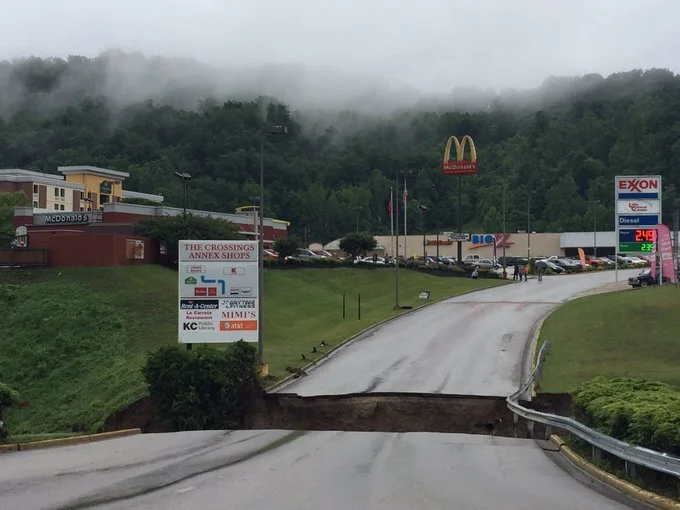West Virginia
Background on the west virginia vehicular bridge program
Flooding in West Virginia has destroyed hundreds of residential vehicular bridges that families depend on to reach vital resources. Until the bridges are replaced, high water events (which occur frequently from spring through fall) will continue to strand these families. This results in children missing school, parents missing work, and elderly not having access to vital medical care. And for families like these, who are among the most neglected, underserved, and low-income families in the state, these effects can be even more devastating.
While the worst flooding occurred in 2015 and 2016, more bridges are in need of replacement every year. To begin rebuilding these communities, the state of West Virginia needed a comprehensive and collaborative approach. Local, state, and federal representatives all needed to have a hand in the recovery process. Through a combination of community understanding, engineering expertise, and government backing, the WV-VOAD Bridge Project was born.
Since then, WV-VOAD, MDS, and JZE (all elaborated upon below) have collaborated to replace approximately 100 bridges since 2015. The impact has been immense and life changing. One family even reported that their replacement bridge literally saved their father’s life. Just one day after the bridge was complete, he went into cardiac arrest and had to be rushed to the hospital, where medical staff were able to save him. The paramedics on the ambulance told the family that if the bridge wouldn’t have been replaced, they wouldn’t have been able to reach him in time.
While the bridge replacements have been incredibly impactful, however, the global COVID-19 pandemic has made it more difficult to maintain that momentum. The pandemic has also made it more difficult for EIA to complete international bridge projects and has increased our interest in expanding further into domestic projects in the United States. In the fall of 2020, the three organizations listed above accepted EIA’s proposal to join them in their historic partnership and add new energy and resources to the effort to end the isolation currently plaguing so many West Virginia families in need of bridge replacements.
More detail on each of the key partner organizations follows.
West Virginia Voluntary Organizations Active in Disaster (WV-VOAD) is a humanitarian association of independent organizations that may be active in all phases of disaster. Its mission is to identify unmet needs and facilitate efficient streamlined service delivery to those imperiled or impacted by disaster while eliminating duplication of effort through cooperation, coordination, communication, and collaboration in the four phases of disaster: preparation, response, recovery and mitigation.
Mennonite Disaster Service (MDS) is a volunteer network of Anabaptist churches that responds in Christian love to those affected by disasters in Canada and the United States. While the main focus is on clean up, repair and rebuilding homes, this service touches lives and nurtures hope, faith and wholeness.
JZ Engineering (JZE) is a structural engineering and sustainability consulting firm in Harrisonburg, Virginia which specializes in the engineering of pedestrian bridges, solar arrays, green roofs, residential and light commercial structures, and nonprofit projects.
EIA traditionally works in low income countries overseas but is looking to expand to low income areas in the United States as well. EIA’s Bridge Program Director, Ethan Gingerich, is a former employee of JZE and worked on dozens of the WV vehicular bridge replacement projects from 2015-2018. In the spring of 2020 he helped facilitate students from the EIA chapter at Duke University to spend their spring break working with JZE, MDS, and VOAD to help construct a bridge. The students had a fantastic experience and were eager to see the opportunity expand to more EIA student chapters if possible.
Before offering this opportunity to additional chapters, EIA wanted to ensure it could be facilitated in an even more robust fashion with increased emphasis on teaching skills related to engineering design, construction, safety, and working with people of diverse backgrounds. During the summer of 2020, students with experience on a combination of traditional EIA projects and the Duke spring break bridge helped EIA develop that curriculum. It is now on EIA’s online learning management system ready for new students to engage with, and will be supplemented with several “review calls” where students will present their plans to EIA staff to ensure they are sufficient and that the students are prepared for the build.
EIA plans to have eight student chapters participating in four bridge projects in West Virginia over the summer of 2021.
Check out the photos below (and videos above), made by our partner organizations, to get an idea of what has already been accomplished by this historic program in West Virginia, and what EIA will become part of during the summer of 2021.














